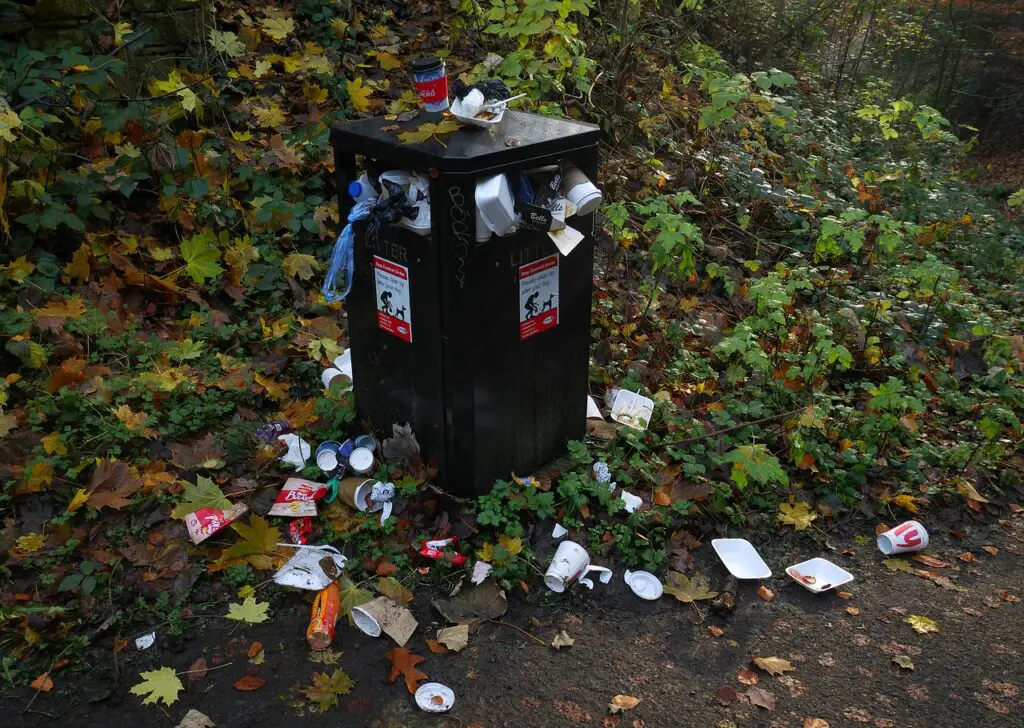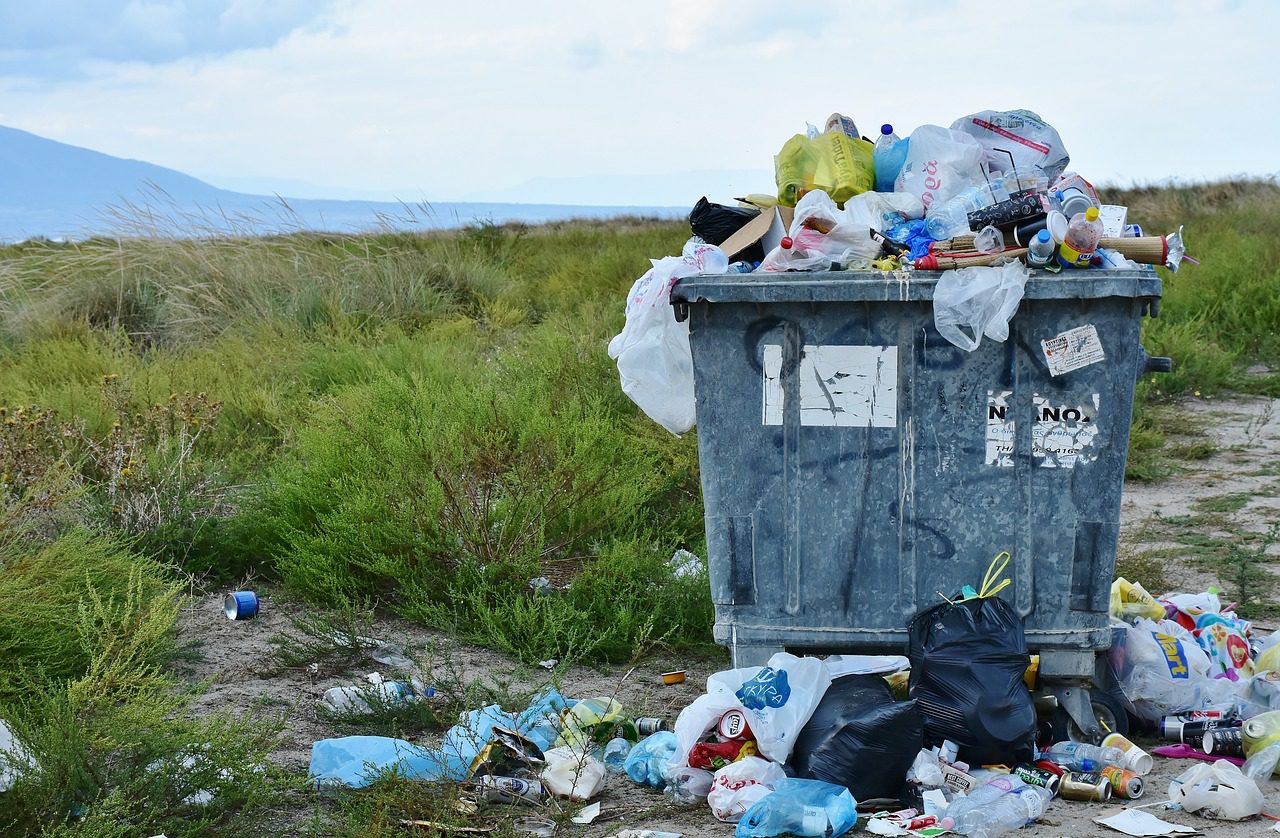Litters refers to waste or discarded objects that are improperly disposed of in public areas such as streets, parks, beaches, or other places. It can include items like food wrappers, cigarette butts, plastic bottles, cans, paper, and various other types of garbage. Litter is considered a form of pollution and can have negative impacts on the environment, wildlife, and human health.
When people litter, they fail to dispose of their waste properly by throwing it on the ground instead of using designated trash cans or recycling bins. Litter can accumulate over time, creating an unsightly and unclean environment. It can also pose hazards to animals who may ingest or become entangled in the litter.
Littering is generally discouraged and, in many places, it is subject to legal penalties. Governments and organizations often promote anti-littering campaigns to raise awareness about the importance of proper waste disposal and encourage responsible behavior.
Proper waste management, recycling, and community efforts can help reduce litter and keep public spaces clean and healthy.
Products That Can Be Derived From Litters

Litter, especially waste materials, can be repurposed and transformed into various products through recycling and upcycling processes.
Here are some examples of products that can be derived from litters:
1. Recycled Paper
Waste paper, including newspapers, magazines, and cardboard, can be processed and transformed into recycled paper products like notebooks, stationery, packaging materials, and even toilet paper.
2. Plastic Lumber
Plastics, such as water bottles and food containers, can be recycled and converted into plastic lumber. This material can be used to make outdoor furniture, decking, fencing, and other construction materials.
3. Upcycled Clothing and Accessories
Discarded clothing and fabrics can be repurposed and upcycled to create new garments, bags, accessories, and home decor items. This process involves redesigning and transforming the materials into fashionable and unique products.
4. Compost and Fertilizer
Organic waste, such as food scraps and yard trimmings, can be composted to create nutrient-rich soil. This compost can be used for gardening, landscaping, and agriculture, providing a sustainable alternative to chemical fertilizers.
5. Recycled Plastic Products
Plastics, including bottles, containers, and packaging materials, can be recycled and turned into new plastic products. These can include recycled plastic bottles, food containers, storage bins, and even polyester fabric for clothing.
Read Also: How To Reduce Waste At Home Properly
6. Upcycled Glass Crafts
Glass bottles and jars can be upcycled into various decorative and functional items. They can be transformed into vases, candle holders, drinking glasses, or crushed and used in the production of new glass products.
7. Tire-derived Products
Used tires can be recycled and transformed into various products, such as rubberized asphalt for road construction, playground surfacing, rubber mulch for landscaping, or even used in the production of new tires.
8. Energy from Waste
Certain types of waste, such as biomass and municipal solid waste, can be converted into energy through processes like incineration or anaerobic digestion. This can generate electricity, heat, or biofuels.
9. Eco-bricks
Plastic bottles filled with compacted non-biodegradable waste can be used as building blocks for various structures, including walls and furniture. These eco-bricks help reduce plastic waste and provide low-cost construction materials.
10. Upcycled Art and Crafts
Litter and waste materials can serve as artistic inspiration. Artists and crafters can transform discarded items into unique sculptures, jewelry, home decorations, and more.
Read Also: Products That Can Be Derived From Inorganic Wastes
11. Upcycled Furniture
Discarded wood, metal, and other materials can be repurposed to create unique and stylish furniture pieces. Old pallets can be transformed into tables, chairs, or bookshelves, while reclaimed wood can be used to build cabinets, benches, or bed frames.
12. Eco-friendly Building Materials
Certain types of litter, such as plastic bottles or shredded paper, can be incorporated into eco-friendly building materials. For example, plastic bottles can be filled with sand or other materials to create building blocks, or shredded paper can be mixed with clay to produce sustainable bricks.
13. Repurposed Electronics
Electronic waste, including old computers, smartphones, and appliances, can be refurbished and repurposed. These items can be repaired, upgraded, and donated or sold as affordable alternatives, reducing electronic waste and extending the lifespan of electronics.
14. Recycled Metal Products
Scrap metal can be melted down and recycled into new metal products. This process can create a range of items, including new metal sheets, rods, wires, or even artistic sculptures and decorative pieces.
15. Upcycled Plastic Bags
Plastic bags, which are a common form of litter, can be transformed into reusable shopping bags, tote bags, or even woven into durable mats. This reduces the consumption of single-use plastics and helps combat plastic pollution.
16. Repurposed Glass Bottles
Glass bottles can be cut, reshaped, and transformed into a variety of useful products. They can be turned into drinking glasses, lamps, candle holders, or decorative containers. Glass bottle walls can also be used for architectural purposes, allowing natural light to pass through.
17. Upcycled Tyre Products
Used tires can be creatively repurposed into various products. They can be transformed into outdoor planters, swings, pet beds, or even used as base material for playgrounds. The durable and versatile nature of tires makes them suitable for a wide range of upcycled applications.
18. Recycled Textiles
Old clothing, fabric scraps, and other textile waste can be recycled and turned into new textile products. They can be transformed into insulation materials, rugs, blankets, or used as stuffing for pillows and toys.
19. Upcycled Plastic Art Installations
Plastic waste can be transformed into large-scale art installations, raising awareness about plastic pollution and environmental issues. Artists can create sculptures, murals, or interactive exhibits using discarded plastic materials.
20. Bio-based Products
Organic waste, such as agricultural residues or food waste, can be processed to extract valuable compounds and create bio-based products. These can include biodegradable packaging materials, bio-plastics, biofuels, or natural fertilizers.
21. Upcycled Bicycle Accessories
Old bicycle tires and inner tubes can be repurposed to create accessories such as wallets, keychains, and belts. The rubber material provides durability and a unique aesthetic for these upcycled products.
22. Recycled Packaging Materials
Littered cardboard boxes and packaging materials can be recycled and turned into new packaging solutions. These recycled materials can be used to create boxes, envelopes, and cushioning materials for shipping and transportation.
23. Upcycled Wine Cork Crafts
Wine corks can be collected and transformed into various crafts and functional items. They can be used to create coasters, bulletin boards, trivets, or even carved into small figurines and jewelry.
24. Repurposed CD/DVD Art
Old CDs and DVDs, which are often considered outdated, can be repurposed into unique art pieces. They can be used as mosaic tiles for creating decorative wall art, mobiles, or even transformed into reflective sculptures.
25. Recycled Plastic Filament for 3D Printing
Plastic waste, such as discarded bottles and containers, can be processed and converted into filament for 3D printers. This recycled filament can then be used to create new 3D-printed objects and prototypes.
26. Upcycled Leather Products
Discarded leather materials, such as old jackets or furniture upholstery, can be repurposed into new products. They can be used to create bags, wallets, belts, or even patches for clothing and accessories.
27. Recycled Metal Art
Scrap metal, including steel, aluminum, or copper, can be transformed into artistic sculptures and installations. These unique metal art pieces can be displayed in public spaces, galleries, or even private collections.
28. Upcycled Plastic Jewelry
Plastic waste, such as bottle caps or discarded plastic items, can be cleaned, shaped, and transformed into colorful and creative jewelry pieces. This upcycling process allows for unique and eco-friendly accessories.
29. Repurposed Wood Crafts
Old wooden pallets, furniture, or construction materials can be repurposed into various crafts and home decor items. They can be used to create picture frames, wall shelves, coasters, or even wooden toys.
30. Upcycled Pet Accessories
Littered materials can be repurposed to create accessories for pets. For example, old t-shirts can be transformed into pet beds, and discarded fabric can be used to make pet toys or bandanas.
These examples highlight the potential for reimagining and repurposing litter, showcasing how waste materials can be transformed into valuable and sustainable products.
By finding innovative ways to repurpose and transform litter, we can reduce waste, conserve resources, and contribute to a more sustainable and circular economy. The possibilities for creating useful and meaningful products from litter are vast, limited only by our creativity and commitment to sustainability.
The above examples demonstrate the potential to derive valuable and functional products from litter through creative thinking and sustainable practices. By incorporating upcycling and recycling into our daily lives, we can reduce waste, minimize environmental impact, and contribute to a more circular economy.
Read Also: Best Frozen Hot Chocolate Drinks

